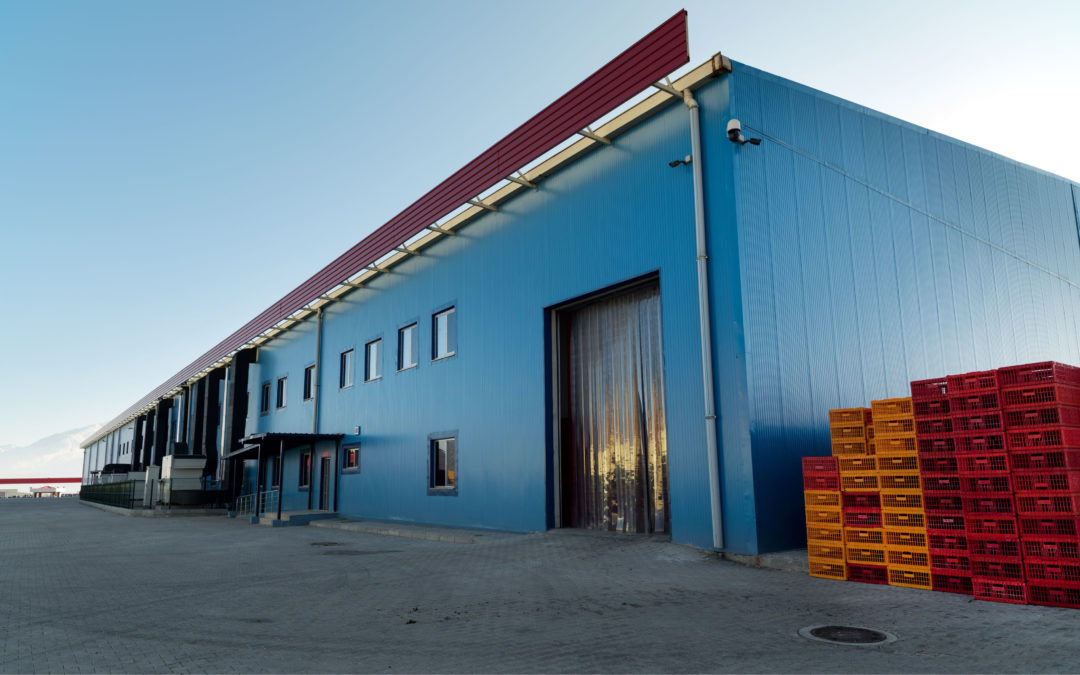Cold storage, in any capacity, is vital to creating a more resilient food system. It ensures that as little goes to waste as possible at every step of the value chain. But warehouse and cold storage space are in short supply, and the need is only growing.
National Trends on Cold Storage
The pandemic, supply chain issues, and even natural catastrophes unveiled the value of cold storage space. With more consumers nationwide choosing to buy groceries online and stock up on frozen foods and meals, the average national cold storage vacancy dropped from 4.7% to 3.8% during the course of 2021 (Wealth Management, Feb 2022).
These trends are changing the development of cold storage projects, with more investors betting on the market’s growing need. As of June 2022, nearly 3.3 million square feet of refrigerated warehouse space was under construction even without companies slated to utilize the spaces, some 1,000% more than was built in 2019. The share of investors pursuing cold storage rose from 7.0% in 2019 to 44% in April 2022, according to a recent survey by commercial real estate services survey firm CBRE (WSJ, June 2022).
Even as people return to retail shopping in person, cold storage usage still remains high compared to pre-pandemic numbers. One of the most significant growing needs is for meat and poultry. The most recent USDA Cold Storage Survey revealed that total red meat supplies in freezers were still up 23%, and stocks of chicken were up 12% from the previous year (August 2022).
Cold storage facilities, however, are expensive to build, costing around $250 to $350 per sq. ft. compared to $100 per sq. ft. for dry warehouse space. Higher costs and widespread demand are creating challenges for those in the good food sector to access the space they need.
Recommendations to Build Sustainable Cold Storage
Although access to cold storage provides small farmers and agri-businesses a competitive advantage in the market, affordability and accessibility stand as key barriers. When New Venture Advisors conducts needs assessments among food system stakeholders, one of the most frequently mentioned issues we hear is the need for more cold and frozen storage space that is both convenient and not cost-prohibitive to utilize.
In designing cold storage solutions, we often consider the following recommendations to improve feasibility.
- Cold storage space should be part of a larger operating model. The bottom line is that efficient cold storage space is expensive to build and often incurs a high monthly utility bill. To offer ample space that breaks even at a price small food businesses and producers are willing to pay, cold storage space should be built in addition to other operations such as a shared kitchen, co-packing space, or even a meat processing facility. This ensures multiple revenue streams are available to cover the cost with multiple users sharing the space.
- Build a network of users. While speculative construction may work for investors counting on large private companies to buy or occupy, it is not a feasible practice for local and regional infrastructure that is publicly available for leasing to many different types of stakeholders. To build such a facility, an owner or operator must first build a consensus of users. The pinch point for more cold storage space is felt among many players- from farmers to processors to distributors to food banks- all of whom are viable project partners. Understandably, the coordination will take additional planning time and resources to identify the size and location of a facility. However, businesses are more apt to pay for a space they have had a hand in designing to meet their specific needs.
- Take advantage of available financing options. The USDA is making sure there is an increase in available cold storage space by increasing the amount of funding available for these projects. Earlier this summer, they announced programs to address the limited processing, distribution, storage, and aggregation capacity for a variety of food sectors, and to address high equipment costs, lack of competition, and limited supply chain and value chain coordination (USDA). Some options include:
-
- Food Supply Chain Guaranteed Loan Program available through qualified lenders will “increase capacity and help create a more resilient, diverse, and secure U.S. food supply chain.”
- Local Agriculture Market Program (LAMP) Grants assist in the development, coordination, and expansion of local and regional food business enterprises that engage as intermediaries in indirect producer-to-consumer marketing to help increase access to and availability of locally and regionally produced agricultural products. While this grant won’t cover construction costs, these funds will help with the planning and implementation of projects.
Image: daphnusia images/shutterstock



